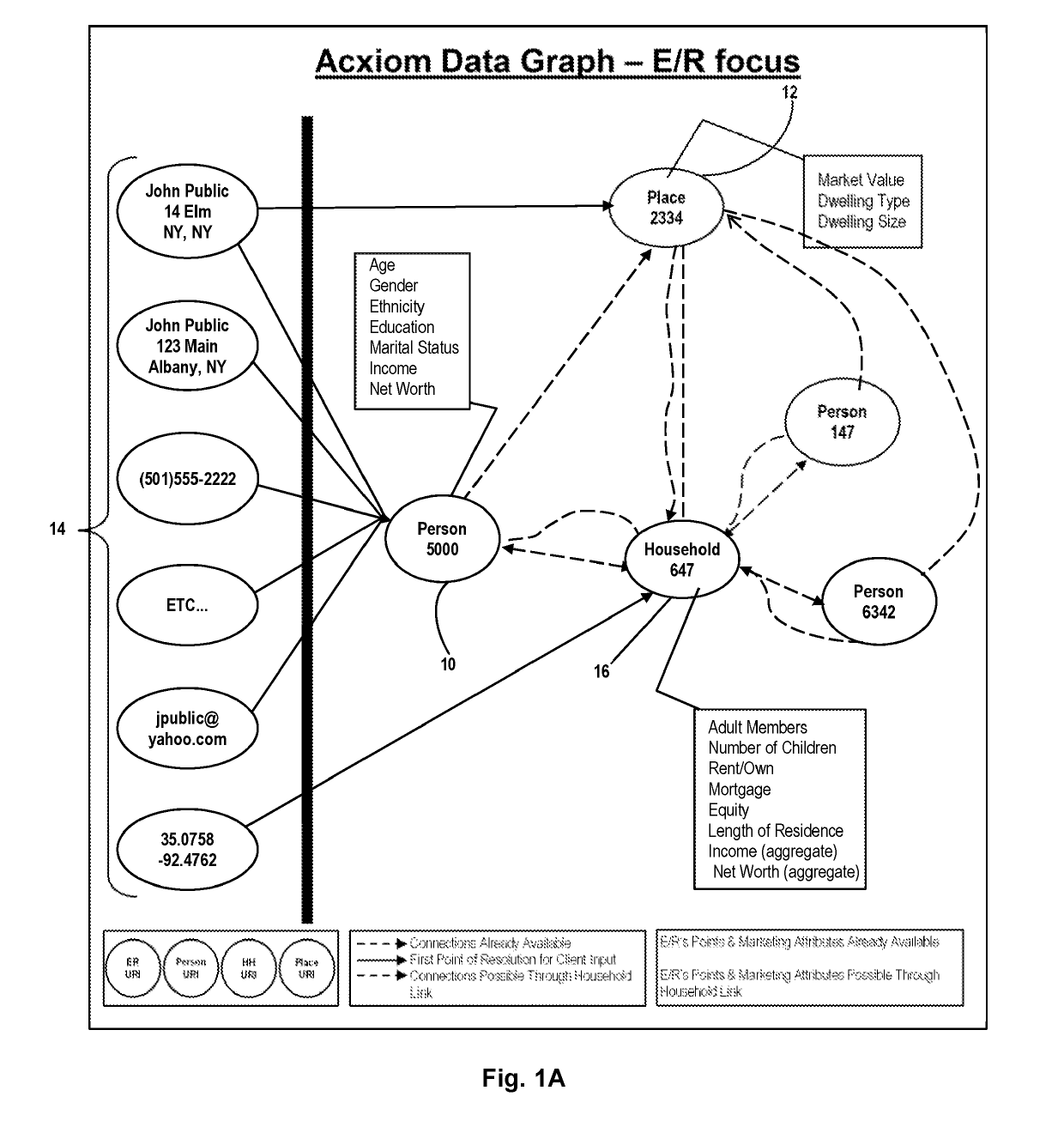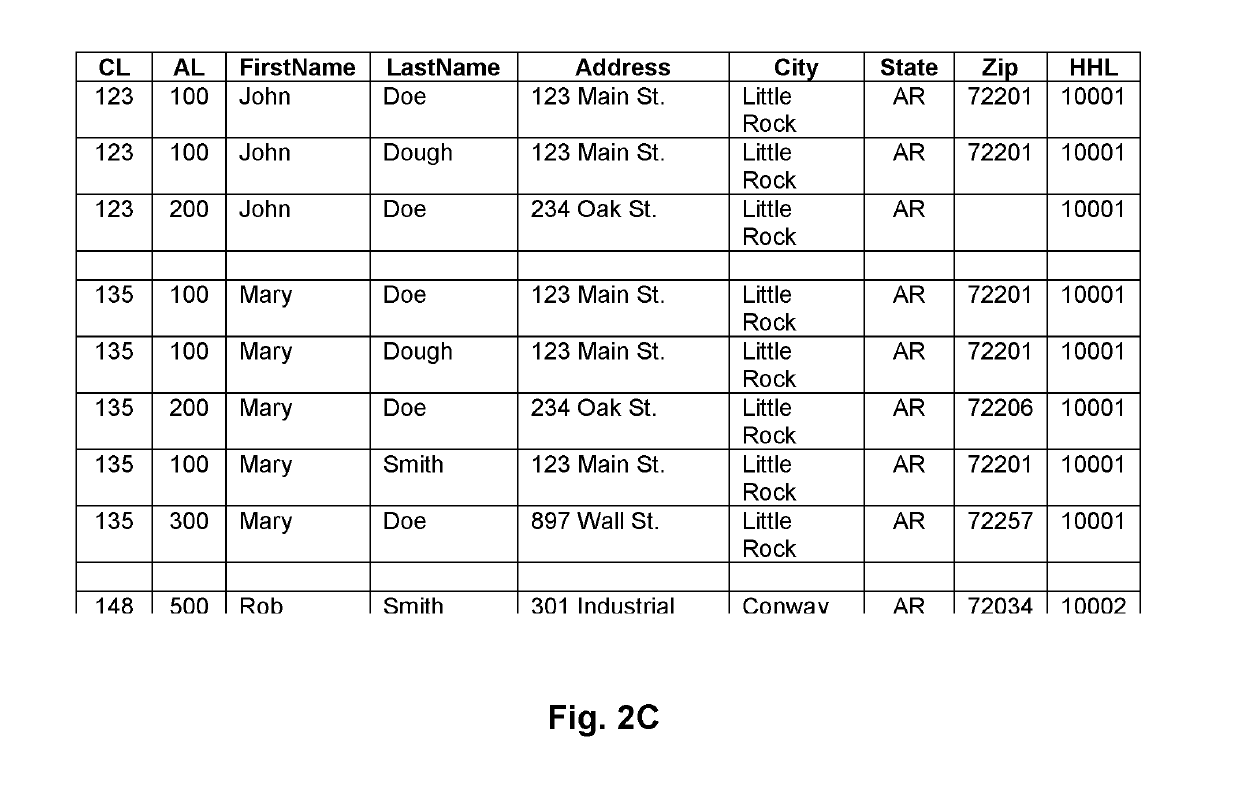System and Method for Improving Computational Efficiency of Consumer Databases Utilizing Household Links
a technology of consumer databases and household links, applied in the field of relationship modeling, can solve the problems of significant ambiguity, significant amount of “stale” or incorrect information, and difficulty in identifying such records, so as to reduce the computation time of decision-making, reduce the accuracy and recency of decisions, and facilitate interpretation.
- Summary
- Abstract
- Description
- Claims
- Application Information
AI Technical Summary
Benefits of technology
Problems solved by technology
Method used
Image
Examples
Embodiment Construction
[0045]FIG. 1A shows the ecosystem for entity resolution (ER) within a data environment and how household links according to an implementation of the invention fits in this ecosystem. Prior to the inclusion of household links, the data environment's ER focus was limited to recognizing a person / individual consumer link (CL) and a place / address link (AL). The environment would read in the entity representation information as presented by entity data 14, and resolve to a person 10 and a place 12. The entity representations from left, i.e., a name across two addresses, phone, and an email, could all resolve to a single person (associated with CL 5000 in the example). By contrast, a latitude / longitude or address could resolve only to a place 12 (associated with AL 2334 in the example). Each person would have its respective demographic data tied to it to help marketers segment and target its customers accordingly.
[0046]The inclusion of this invention, i.e., household link, affords signific...
PUM
 Login to View More
Login to View More Abstract
Description
Claims
Application Information
 Login to View More
Login to View More - R&D
- Intellectual Property
- Life Sciences
- Materials
- Tech Scout
- Unparalleled Data Quality
- Higher Quality Content
- 60% Fewer Hallucinations
Browse by: Latest US Patents, China's latest patents, Technical Efficacy Thesaurus, Application Domain, Technology Topic, Popular Technical Reports.
© 2025 PatSnap. All rights reserved.Legal|Privacy policy|Modern Slavery Act Transparency Statement|Sitemap|About US| Contact US: help@patsnap.com



